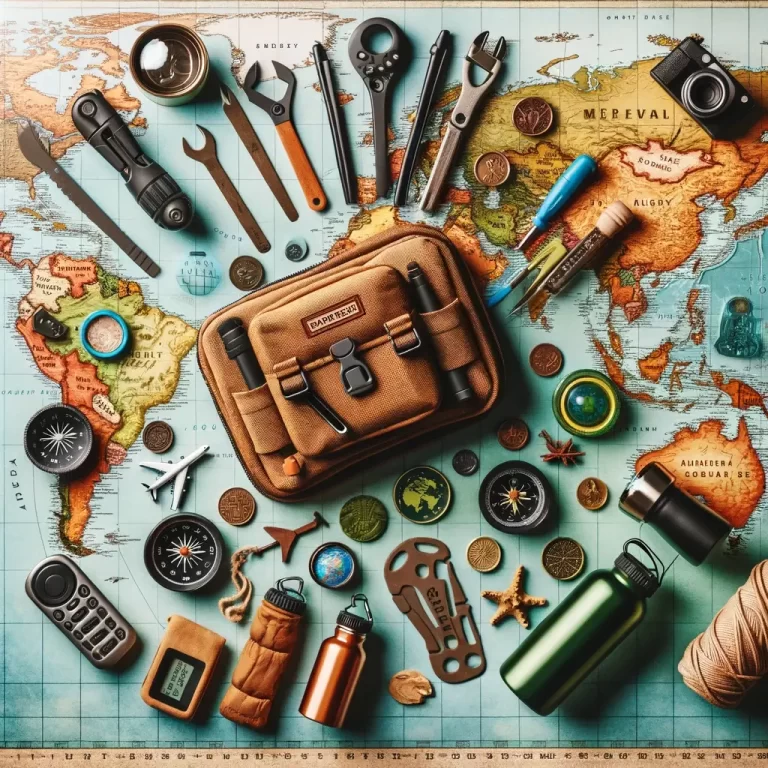Essentials for your backpacking first aid kit
Embarking on a backpacking journey is an exhilarating experience that immerses you in the beauty of nature and the thrill of adventure. Yet, being prepared is crucial to ensure your safety and enjoyment. A well-curated backpacking first aid kit is your trusty sidekick, ready to handle unexpected situations that may arise on the trail.
Whether you are scaling remote mountains or trekking through lush forests, the necessity of a first aid kit cannot be overstated. It’s the bridge between an incident and professional medical help, and having one at hand can make all the difference in managing emergencies effectively.
Why you need a backpacking first aid kit
When you’re miles away from civilization, a minor injury can quickly escalate into a major concern. A backpacking first aid kit is your first line of defense, designed to manage initial wound care, address minor ailments, and stabilize more serious conditions until you can get expert medical attention.
From blisters to bites, or sprains to splinters, your first aid kit is a portable health resource. It’s not just about having band-aids and antiseptics; it’s about being equipped to tackle a range of health issues that could otherwise interrupt your adventure.
Moreover, carrying a first aid kit is part of being a responsible traveler. It reflects a mindset of preparedness and respect for the unpredictability of nature.
Best backpacking first aid kits for 2024
The market offers a variety of best backpacking first aid kits for 2024, each boasting features tailored for the wilderness. When selecting a kit, consider factors such as weight, content variety, and compartmentalization.
A high-quality kit will have items organized in a manner that allows for quick access. Look for kits with durable, waterproof cases, and ensure they contain up-to-date medications and sterile bandages. Consider kits that leave room for personalization, so you can add items specific to your needs.
Some of the top picks for 2024 combine lightweight designs with comprehensive supplies, meeting the needs of both novice hikers and seasoned adventurers.
How to build your own backpacking first aid kit
Creating a custom backpacking first aid kit is a rewarding process that ensures you carry exactly what you need. Start by listing the essentials: adhesive bandages, antiseptic wipes, blister treatments, gauze pads, adhesive tape, and a set of tools like tweezers and scissors.
Next, consider your specific travel destination. Will you be in snake territory? Pack a snake bite kit. Heading to high altitudes? Include medication for altitude sickness. Factor in personal medications and a list of emergency contacts as well.
Remember to keep it light – your kit should be comprehensive, but not overpacked. Each item should serve a purpose and preferably have multiple uses.
Essential items for your backpacking first aid kit
The essentials for your backpacking first aid kit include a variety of items that address common issues. Here’s a checklist for your consideration:
- Adhesive bandages of various sizes for cuts and scrapes
- Antiseptic wipes and creams to disinfect wounds
- Sterile gauze pads and adhesive tape for larger injuries
- Blister treatments like moleskin or gel pads
- Anti-inflammatory drugs (e.g., ibuprofen) for pain and swelling
- Antihistamines for allergic reactions
- Tools such as tweezers, safety pins, and multi-use gear
- Emergency items like thermal blankets and signaling mirrors
Always check the expiration dates and replenish your kit as needed.
Day hike first aid kit list
A day hike first aid kit list should be compact yet complete, ensuring you have the essentials without the added weight. Here’s a basic checklist:
- Band-aids and blister cushions
- Antiseptic wipes and antibiotic ointment
- Pain relievers and electrolyte tablets
- An emergency whistle and a compact mirror
- A small roll of medical tape and a few gauze pads
Adjust the contents based on the length and remoteness of your hike, the season, and your medical history.
Tips for organizing and packing your first aid kit
Organization is key to a functional first aid kit. Use clear, waterproof bags to categorize items and ensure quick access. Here are some tips for organizing a backpacking first aid kit:
- Group items by type: wound care, medications, tools.
- Use small containers to prevent spillage of creams or pills.
- Label everything clearly to avoid confusion during stressful situations.
- Regularly review and update your kit to replace used or expired items.
Maintaining an organized kit means you’ll spend less time searching and more time treating any medical needs efficiently.
Comparing prepackaged vs. DIY backpacking first aid kits
When it comes to prepackaged vs. DIY backpacking first aid kits, there are pros and cons to each. Prepackaged kits offer convenience and are often designed by medical professionals, ensuring a well-rounded selection of items. However, they may include unnecessary items, adding extra weight.
DIY kits, on the other hand, can be tailored to your specific needs and may be more cost-effective in the long run. They require a better understanding of first aid, though, so consider taking a wilderness medicine course to complement your custom kit.
Ultimately, the best choice depends on your experience, trip details, and personal preferences.
Frequently asked questions about backpacking first aid kits
What should be in a backpack first aid kit?
A backpack first aid kit should contain items to treat minor injuries, manage pain or allergies, and stabilize a person until further medical treatment can be obtained. Essential components include various types of bandages, antiseptics, pain relievers, and tools like tweezers and scissors.
It’s also wise to include personal medications and items suitable for the specific environment you’ll be exploring. Don’t forget to consider the weight of the kit, as it should be portable enough to carry comfortably on long hikes.
What should I pack in my first aid kit for abroad?
When packing a first aid kit for travel abroad, in addition to the standard items, include travel-specific medications like anti-diarrhea pills and rehydration salts, as well as any vaccinations or prophylactics required for your destination. It’s also a good idea to carry a card with your blood type and any allergies clearly listed.
Research the health risks associated with your destination to tailor your kit appropriately. Always keep it lightweight and compact to ensure it doesn’t become a burden on your travels.
How much does a backpacking first aid kit weigh?
The weight of a backpacking first aid kit can vary widely depending on its contents and packaging. A basic kit for day hikes might weigh as little as a few ounces, while a more comprehensive kit for longer treks could be a pound or more.
Focus on including multipurpose items and avoid overpacking. The goal is to strike a balance between being prepared and maintaining a manageable pack weight.
What do you need in a first aid kit for travel?
For travel, your first aid kit should include items for common travel ailments, such as motion sickness, stomach upsets, and minor injuries. Medications for pain relief, fever reduction, and antiseptics for wound care are fundamental. Also, consider location-specific needs such as altitude sickness pills or insect repellent.
Always consider the length of your trip and the availability of medical supplies at your destination when deciding what to pack.
Remember, whether you’re crafting your own kit or opting for a pre-made option, the goal is to be prepared for the unexpected. Your backpacking first aid kit is an essential travel companion that ensures you can confidently explore the world’s wonders while staying safe. Pack smart, travel far, and embrace the adventure that awaits.







